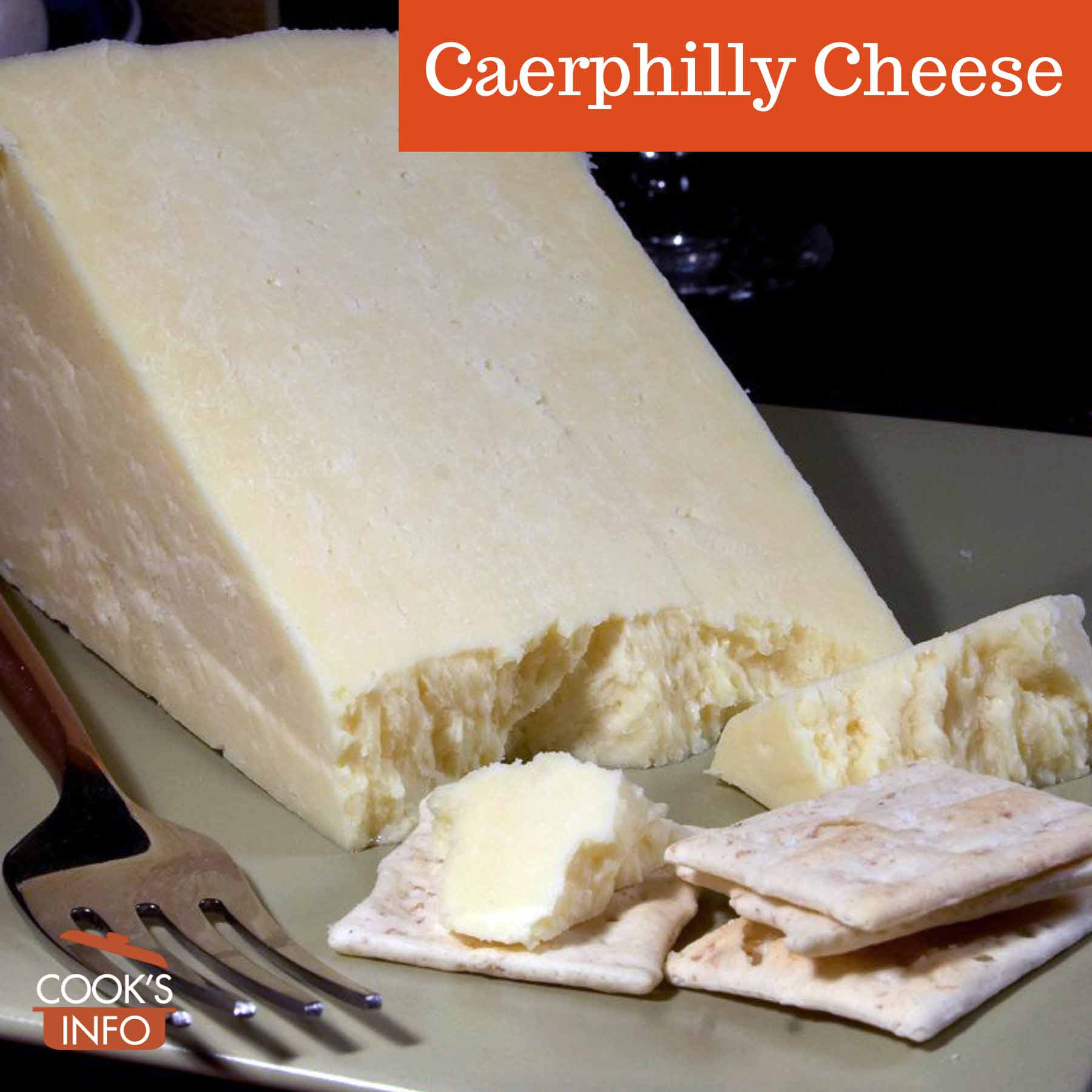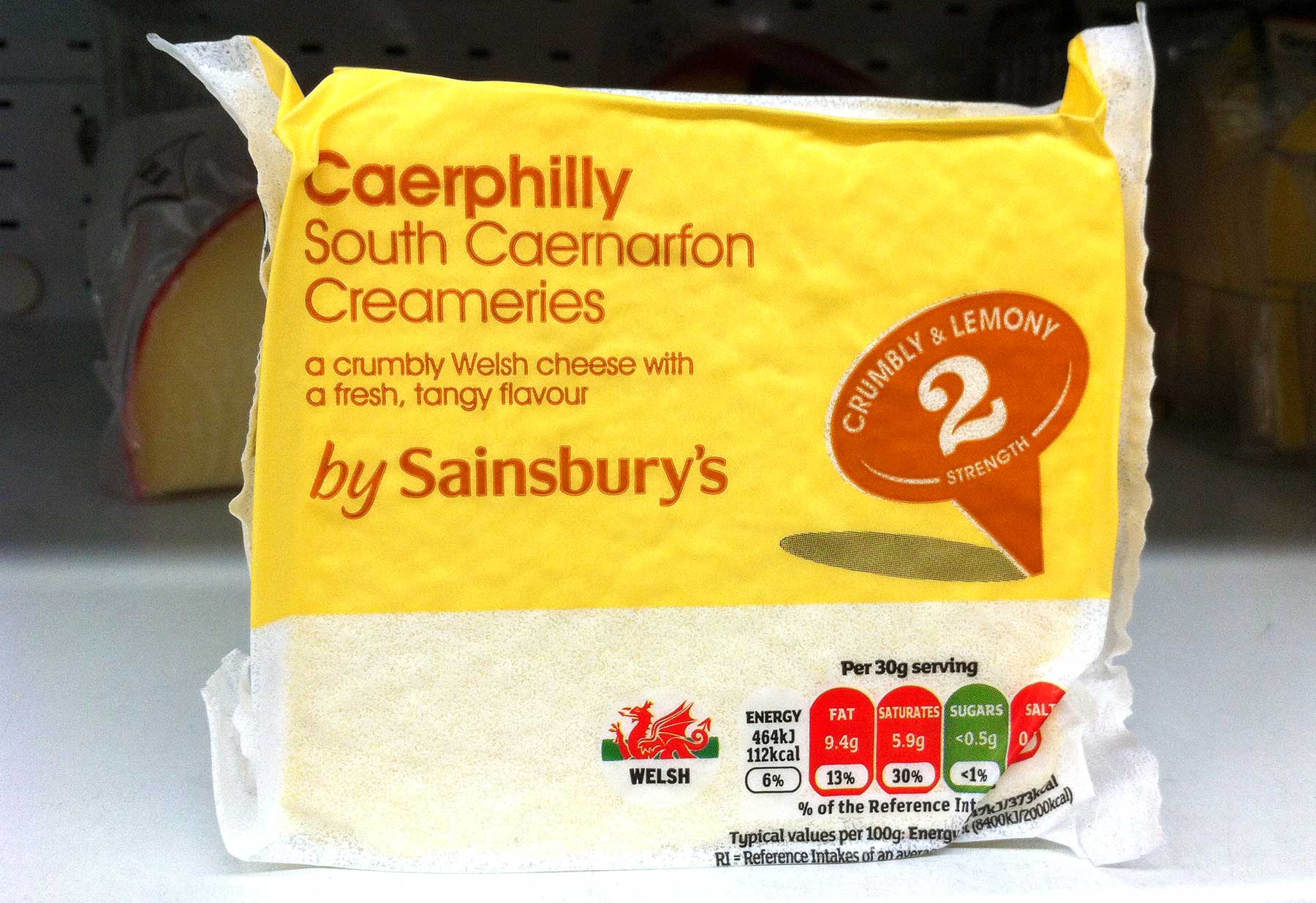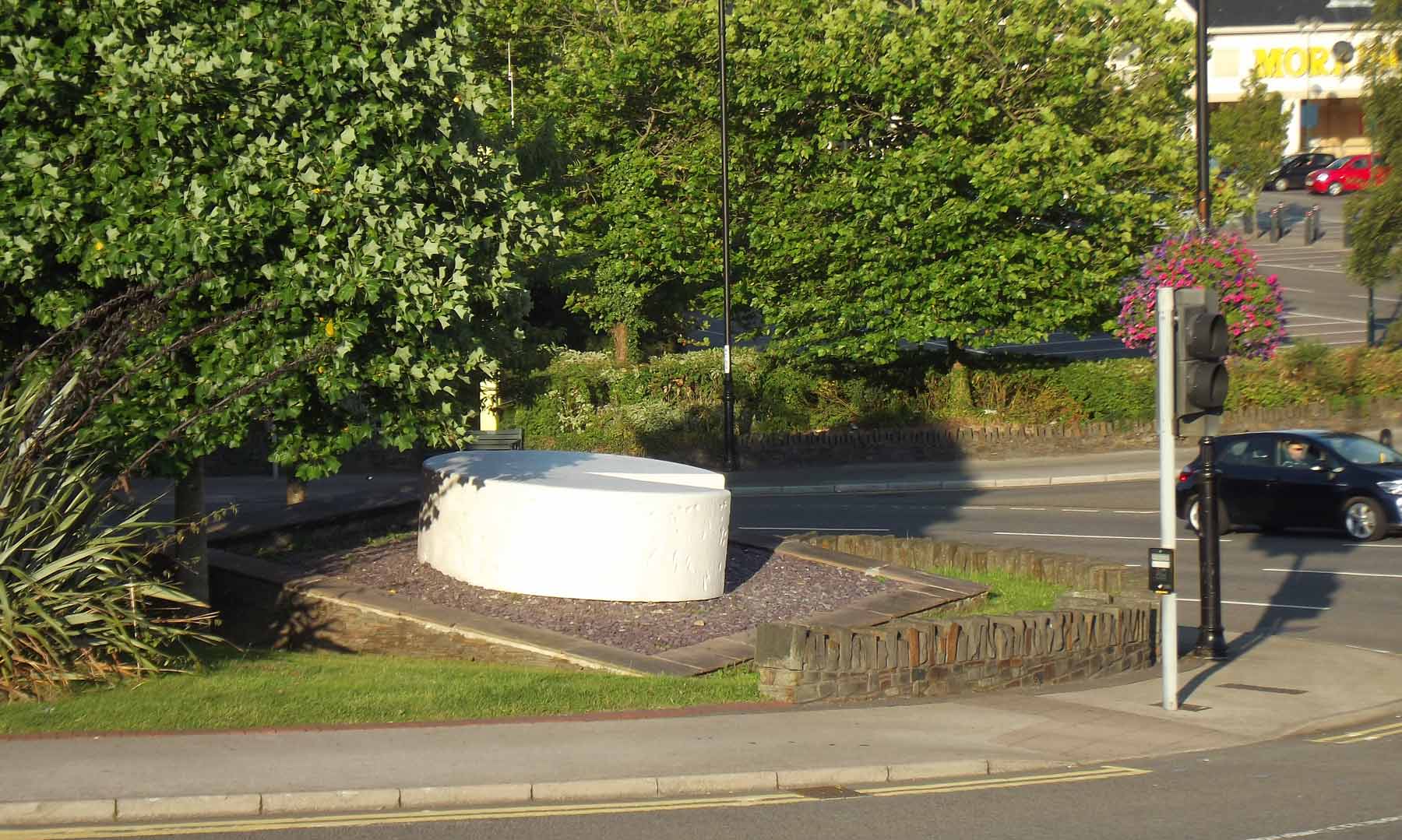
Caerphilly Cheese. PDPhotos / Pixabay.com / 2010 / CC0 1.0
Caerphilly is a variety of cheddar cheese associated with Caerphilly, Wales. There is no legal requirement, however, for the cheese to be made there, or even in Wales, for that matter.
Brand names of Caerphilly include Castle Dairies, Gorwydd, Duckett’s Farm, Caws Cenarth, Reece’s Creamery and Joseph Heler Creamery. The latter two are in Cheshire, England. Castle Dairies is the only maker of Caerphilly actually still in Caerphilly.
Caerphilly is made from unpasteurized cows’ milk. The milk is heated to 32 C (90 F). Culture and rennet are added. The rennet may be vegetarian or animal, again, depending on the brand. The milk is let stand for 30 minutes to curdle, then the curd is cut into small pieces, stirred, and the temperature raised to 33 C (92 F). The curd is cut again into somewhat larger pieces (2 to 3 cm / 1 inch), salted, put into moulds which are pressed overnight, then immersed in brine for 24 hours. After this, the cheese is put in a ripening room at 15 C (60 F ).
Depending on the brand, it is matured anywhere from 8 to 10 to 14 days. Some brands, such as Gorwydd Caerphilly (pronounced Gorwith Carefilly), are aged 4 to 12 weeks.
Caerphilly cheeses are crumbly and off-white inside a pale ivory rind which is covered with a fine, powdery flour (rice flour is used now.)
Gorwydd Caerphilly looks different: it has a stripe of white at the centre of the off-white cheese, and the rind is very dark, almost black. The cheeses have a sharp smell and a slightly sour tang to the taste. As they mature, the skin becomes thicker and the cheese creamier and less crumbly. Gorwydd Caerphilly is made by a Todd Trethowan and his family at Gorwydd Farm near Tregaron, Ceredigion, Wales.
In Wales, the cheese is now largely being made by Castle Dairies just outside Caerphilly (Pontygwindy Industrial Estate.) Tesco’s own brand of Caerphilly Cheese is actually made for them in Cheshire, England by the Joseph Heler Creamery.
Caerphilly Cheese is available in the UK and the United States.
There is an annual cheese race in Caerphilly: a wheel of cheese on a tray has to be carried by two people and raced around the castle.

Caerphilly cheese on supermarket chiller shelf. © Cooksinfo / 2016
Nutrition
The fat content is generally 48%, but reduced fat versions of around 31% are available.
History Notes
The Romans built a fort at Caerphilly in 75 AD. The name means, in Welsh, caer (fort) and Ffili (apparently the son of Saint Cenydd). Construction of the castle was started in 1268 or 1271 by Gilbert de Clare, an Anglo-Norman, whose people had conquered Wales.
The town of Caerphilly grew up as a market town around Caerphilly Castle, the second largest castle in Europe (after Windsor.)
The cheese dates from the early 1830s. A more exact date of 1831 is often given.
Many sources repeat the story that it was popular with Welsh miners because cheese was known to absorb the toxic substances in the air. And after it had absorbed all those toxins, they ate it? More likely, it was popular with them, and everybody else, because it was produced locally and therefore cheaper than other cheeses such as cheddar which had to be brought in by train. And cheese was an easy, high-protein food to carry down in their lunch tins.
By 1910, cheesemakers in Somerset, England, who had usually made cheddar, cottoned onto Caerphilly, whose maturing period was far shorter than that of cheddar which meant a way quicker payback. Today, most Caerphilly is still actually made in Somerset.
Production has been interrupted twice. The first time was during the Second World War when production of all cheese except National Cheddar was forbidden for the sake of rationing.
The second time was in 1993-96, caused by an obscure technicality of dairy regulations. By law, pasteurized milk had to be transported in sealed containers. Raw milk, though, had to be transported in open containers. But Castle Dairies was receiving its raw milk in sealed containers, as an extra sanitary measures on the raw milk. This caused some regulatory issues at the time.
Literature & Lore
There was nought to be heard but Cheese! Cheese! all the time,
Yes, Cheese! Cheese! and Cheese! without ending:
I verily thought that the people of Wales
On nothing but cheese were depending.
Were you to heap up every cheese upon cheese,
And I to climb up had the power,
I could change the moon every noon with great ease
From the top of Caerphilly’s Cheese Tower.
— Welsh bard Telynog, 1858
“Tish tish. No matter. Well, stout yeoman, four ounces of Caerphilly, if you please.” — Customer in Monty Python’s Cheese Shop sketch, 1972.
Language Notes
Caerphilly is pronounced “kar fill ee”. Locally in Wales, Caerphilly is called fondly “the crumblies.”
Sources
Clark, Rhodri. Supermarket giant’s ‘village’ branding conjures up cheesy image of Caerphilly. Cardiff, Wales: Western Mail. 15 December 2007.

Roundabout dedicated to Caerphilly cheese in Caerphilly, Wales. Pampuco / wikimedia / 2014 / CC BY-SA 4.0

Caerphilly Castle. Lacu Schienred / wikimedia / 2018 / CC BY-SA 4.0

